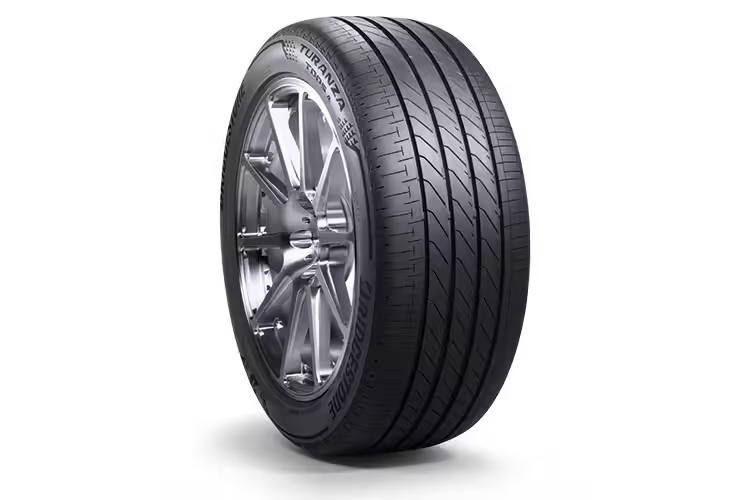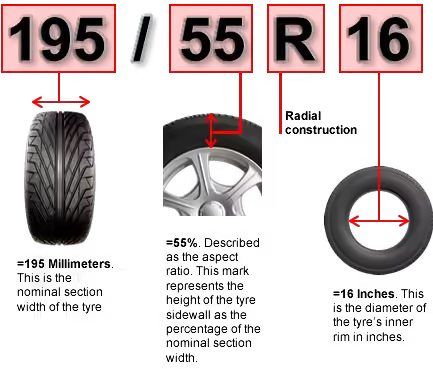Understanding Your Car Tyres

Your car’s tyres are more than just components; they are essential to your vehicle’s safety, fuel efficiency, and overall driving performance. Have you ever noticed the numbers and letters on the side of your tyres? This string of information may seem cryptic at first, but it provides crucial details about your tyre’s specifications, including size, construction, load capacity, and speed rating. Let’s decode these markings, using the images provided as a reference.
Click here: Understanding the Key Components of a Clutch System: A Technical Breakdown
Tyre Code Breakdown

A typical tyre code looks like this: 195/55 R16 87V. Below, we’ll break down what each part of this code means.
1. Tyre Width (195/205)
This number refers to the tyre’s width in millimeters, measured from sidewall to sidewall. In the images, two examples are shown: 195 mm and 205 mm. A wider tyre provides better grip but may reduce fuel efficiency.
2. Aspect Ratio (55)
The aspect ratio is the ratio of the height of the tyre’s sidewall to its width. In our example, “55” means the tyre’s height is 55% of its width. Lower aspect ratios offer better handling but can result in a firmer ride, while higher ratios provide more cushioning but less precise steering.
3. Construction Type (R)
The letter “R” stands for Radial Construction, which is the most common type of tyre construction today. Radial tyres have layers of fabric with cords running perpendicular to the tyre’s direction, improving durability, comfort, and grip.
4. Rim Diameter (16)
This number represents the diameter of the wheel (in inches) the tyre fits. In this case, “16” means the tyre is designed for a 16-inch rim.
5. Load Index (87/91)
The load index tells you how much weight each tyre can support. For instance, “87” corresponds to 545 kg, while “91” corresponds to 615 kg. Ensuring your tyres can handle your vehicle’s weight is essential for safety and tyre longevity.
6. Speed Rating (V)
The final letter indicates the maximum speed the tyre can handle. For example, “V” means the tyre can safely sustain speeds up to 240 km/h, though typical driving conditions rarely require such speeds. Other common speed ratings are shown in the table below.
Tyre Information Table
Here’s a quick reference table for understanding tyre specifications:
| Component | Code Example | Description |
|---|---|---|
| Tyre Width | 195 / 205 | Width of the tyre in millimeters |
| Aspect Ratio | 55 | Height of the sidewall as a percentage of the width |
| Construction Type | R | Radial construction for improved handling |
| Rim Diameter | 16 | Diameter of the inner rim (in inches) |
| Load Index | 87 / 91 | Maximum load capacity per tyre (87 = 545 kg, 91 = 615 kg) |
| Speed Rating | V | Maximum speed limit: V = 240 km/h |
Speed Rating Reference
For better clarity, here’s what each speed rating letter stands for:
| Speed Rating | Max Speed |
|---|---|
| L | 120 km/h |
| T | 190 km/h |
| U | 200 km/h |
| H | 210 km/h |
| V | 240 km/h |
Why Knowing Your Tyre’s Code Matters
Understanding your tyre’s specifications is critical for maintaining optimal performance and safety. Incorrect tyre choices can lead to faster wear, poor handling, and even tyre failure. By knowing the tyre code, you can ensure you’re choosing the right tyres for your vehicle, driving habits, and climate.
Understanding and Finding Your Car
Final Thoughts
While the numbers and letters on the side of your tyre might seem overwhelming at first, decoding them is easier than you think. These details help ensure that your vehicle performs well, stays safe, and maintains efficiency. Next time you’re in the market for new tyres, refer to the code on your current tyres to make informed decisions.
When was the last time you checked your tyre’s condition?
Take a moment today to inspect them, and use this guide to decode the information printed on the sidewall. If you’re unsure about which tyre to choose, ask your mechanic or drop a question in the comments below!
